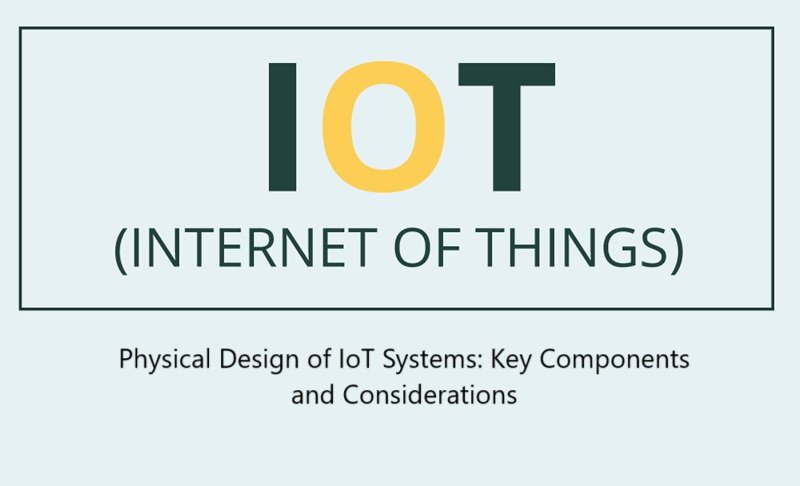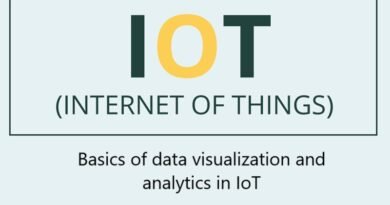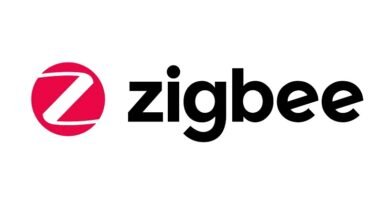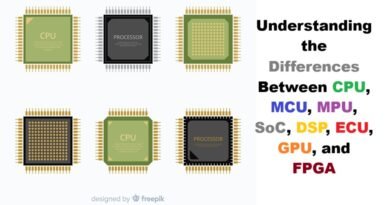Physical Design of IoT Systems: Key Components and Considerations
The physical design of an Internet of Things (IoT) system is crucial for its functionality, performance, and scalability. IoT systems consist of a combination of hardware components that interact with software, networking, and cloud services to collect, process, and transmit data. The physical design of an IoT system includes both the individual IoT devices (sensors, actuators, microcontrollers) and the network infrastructure that allows communication between devices and the cloud.
This article delves into the primary components and considerations for the physical design of IoT systems.
1. IoT Devices (End Nodes)
The core of any IoT system is the device—the “thing” that collects data from the physical world or interacts with the environment. The design of IoT devices involves a combination of hardware components that enable sensing, data processing, and communication.
Key Components of IoT Devices:
- Sensors:
- Sensors are responsible for collecting real-world data from the environment, such as temperature, humidity, light, motion, pressure, or sound.
- Common sensor types include temperature sensors, motion sensors, humidity sensors, gas sensors, and light sensors.
- The choice of sensor depends on the application (e.g., temperature sensors for weather monitoring, motion sensors for security systems).
- Actuators:
- Actuators are responsible for performing actions based on the data received. For example, turning on a fan, opening a valve, or adjusting a thermostat.
- Actuators are typically used in systems that require a response to sensor data, such as smart home devices, industrial automation, or robotics.
- Microcontrollers (MCUs):
- Microcontrollers are the brains of IoT devices. They handle data processing and control operations.
- Microcontrollers interface with sensors and actuators, process the collected data, and decide what action to take based on programmed logic.
- Popular microcontrollers for IoT include Arduino, Raspberry Pi, and ESP32. These microcontrollers often include built-in connectivity features like Wi-Fi, Bluetooth, or Zigbee, making them ideal for IoT applications.
- Power Supply:
- Powering IoT devices is crucial, and the power source depends on the device’s application and energy needs.
- Small IoT devices are often powered by batteries, which can be rechargeable (lithium-ion or lithium-polymer) or disposable (coin cell batteries).
- In some cases, IoT devices are powered using Energy Harvesting techniques, such as solar power, vibration energy, or thermal energy, for longer battery life and sustainability.
- Connectivity Modules:
- Connectivity modules enable IoT devices to communicate with each other or with centralized systems (e.g., cloud services). These modules handle communication protocols such as Wi-Fi, Bluetooth, Zigbee, LoRa, and cellular networks.
- Examples of connectivity modules include Wi-Fi chips, Bluetooth modules, Zigbee radios, and LoRaWAN transceivers.
- The choice of connectivity module depends on the range, power consumption, and data rate required by the application.
- Enclosure and Housing:
- The physical casing or enclosure protects the internal components of the IoT device from dust, moisture, and physical damage. It is especially important in outdoor or industrial applications.
- Enclosures are often made from materials like plastic, metal, or waterproofed materials.
- The design of the enclosure should also consider heat dissipation, especially for devices that generate heat due to high processing loads.
2. Connectivity and Network Design
A critical aspect of IoT systems is how devices communicate with each other and with the cloud or centralized servers. The connectivity infrastructure connects the physical devices to the broader IoT network and the internet.
Key Considerations for Connectivity and Network Design:
- Wireless Communication:
- Wi-Fi: Wi-Fi is one of the most commonly used wireless protocols for IoT devices, especially for applications in smart homes, industrial environments, and consumer electronics. It provides high-speed data transfer and range but consumes more power.
- Bluetooth and BLE: Bluetooth (including Bluetooth Low Energy, or BLE) is widely used for short-range communication in IoT systems, such as wearable devices, health monitors, and smart home applications. BLE is energy-efficient, making it ideal for battery-powered devices.
- Zigbee and Z-Wave: Zigbee and Z-Wave are popular protocols for home automation and smart sensors that use mesh networking to increase range and reliability. Zigbee devices are often used in smart home hubs, lighting, and security systems.
- LoRaWAN: LoRaWAN (Long Range Wide Area Network) is designed for long-range, low-power communication in applications like smart agriculture, asset tracking, and environmental monitoring. It offers a much greater range than Wi-Fi or Bluetooth, but with lower data rates.
- Cellular (4G/5G): Cellular networks, particularly 4G and 5G, are useful for IoT systems that require wide-area coverage, such as fleet management or remote sensors in rural areas.
- Network Topology:
- The physical design of an IoT network also involves deciding on the network topology—the layout of how IoT devices are interconnected.
- Common IoT network topologies include star topology (where devices communicate directly with a central hub or gateway), mesh topology (where devices communicate with each other and extend the network’s coverage), and tree topology (where devices are organized in hierarchical structures).
- Gateways and Routers:
- IoT gateways or routers act as intermediaries between IoT devices and the cloud or other network infrastructures. They receive data from local IoT devices, process it, and forward it to centralized systems via the internet.
- Edge computing: Some IoT devices include local data processing capabilities on the gateway level, known as edge computing. This can reduce latency and the load on the cloud servers, providing quicker responses for time-sensitive applications.
3. Cloud Infrastructure and Data Processing
The physical design of IoT systems is not just about the devices and network infrastructure, but also how the collected data is processed and stored. Data from IoT devices is typically sent to cloud platforms where it can be analyzed, stored, and accessed remotely.
Key Considerations for Cloud Design:
- Data Storage and Management:
- Cloud storage platforms are used to store the massive amounts of data generated by IoT devices. These could be time-series data (e.g., temperature readings, sensor data) or event-based data.
- Cloud storage solutions include Amazon Web Services (AWS), Microsoft Azure, Google Cloud, and other specialized platforms like ThingSpeak or IBM Watson IoT.
- Data Processing and Analytics:
- The data collected by IoT devices is often processed in real-time or batched for later analysis.
- Edge computing can be used to perform data processing closer to the source (on the IoT device or gateway) before sending the processed data to the cloud. This reduces the amount of data transferred and allows for quicker responses.
- Cloud platforms offer tools for analyzing IoT data, identifying trends, and creating actionable insights.
- Security and Encryption:
- IoT devices and cloud platforms must be designed with security in mind. This includes securing data transmission with encryption protocols (e.g., TLS/SSL), authentication methods (e.g., OAuth, two-factor authentication), and access control mechanisms.
- Physical security is also important for devices that are deployed in remote or unsecured locations.
4. Power Management
Efficient power management is critical for the design of IoT systems, especially when devices are deployed in remote locations or are battery-powered.
Key Power Management Considerations:
- Low Power Consumption:
- Devices must be designed to minimize power consumption without sacrificing functionality. Techniques such as sleep modes, low-power sensors, and power-efficient communication protocols (like BLE) help reduce energy usage.
- Battery Life:
- The type of battery used (e.g., Lithium-ion, Lithium-polymer, alkaline batteries) depends on the power requirements of the device. Rechargeable batteries may be used in cases where frequent replacement is not feasible.
- Energy Harvesting:
- In some applications, energy harvesting techniques such as solar power, piezoelectric devices, or thermoelectric generators can be used to power IoT devices, reducing the reliance on batteries.
Conclusion
The physical design of IoT systems involves multiple components that work together seamlessly to achieve efficient data collection, communication, and processing. These components include sensors, actuators, microcontrollers, connectivity modules, and enclosures. Along with network design, power management, and cloud infrastructure, the physical design ensures that the IoT system is reliable, scalable, and cost-effective.
When designing an IoT system, it is essential to carefully select the right components and protocols based on the specific use case. Factors like power consumption, data throughput, range, and security will all play significant roles in determining the best design approach for the application at hand.








